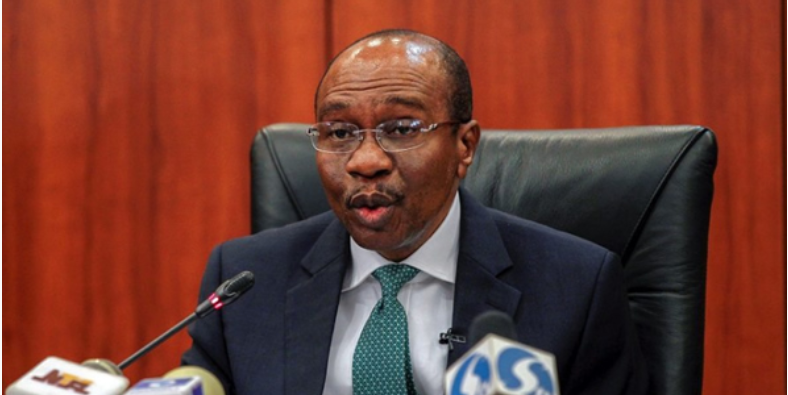Since Wednesday morning, Nigeria’s social media space has been awash with a flurry of comments in reaction to the unveiling of the redesigned Naira notes by President Muhammadu Buhari.
Launched were the redesigned versions of the nation’s highest currency denominations — N1000, N500, and N200. But, Nigerians took the news with a healthy dose of criticism.


The seemingly boring look of the new designs instantly became the butt of many Twitter jokes, with some tweeps even suggesting that the Central Bank of Nigeria (CBN) probably used a Snapchat filter on the old currency notes.
Why redesign the naira?
In the last 15 years, Nigeria has altered its currency four times, the latest being in 2014 when the 100 Naira commemorative banknote was issued to mark Nigeria’s centenary celebration.
On October 26, CBN Governor Godwin Emefiele announced the plan to redesign naira notes, explaining that the decision was in response to persisting concerns with managing the current series of banknotes and currency in circulation.
According to him, available data at the CBN as of the end of September this year indicate that N2.73 trillion out of the N3.23 trillion currency in circulation was outside the vaults of commercial banks across the country and supposedly held by the public.


The Naira redesign, Emefiele added, will help control the money supply and aid security agencies in tackling illicit financial flows. Chief of the reasons for the move is counterfeiting, which the CBN governor said would be tackled with the security features of the redesigned notes.
“What you could only find will be people making photocopies of these notes. If you follow due process to check the authenticity of a currency and take them through the UV (ultraviolet) light, you will find that this currency cannot be counterfeited. The best you will find is photocopies,” he submitted.
Experts believe the redesign is a step in the right direction, especially as Nigeria grapples with currency risk. The Naira, for one, continues to lose its value against the dollar in the exchange market.
Meanwhile, the apex bank is expected to roll out the new notes in December, as the old notes will lose their legal tender status by January 31, 2023.
Read also: More Nigerians are going cashless: E-payment transactions rise to ₦32.8trn in September 2022- NIBSS.
eNaira as a necessity
The notion of money and the monetary system has evolved over the years thanks to the advent of technology. And undoubtedly, the world appears to be gradually embracing digital currencies as means of payment.
To bring it home, according to a report by cryptocurrency exchange Kucoin, approximately 33.4 million Nigerians, or 35% of the country’s adult population aged between 18 and 60, owned or traded cryptocurrencies to hedge against the perpetually depreciating currency.
Last year, Nigeria ranked sixth in the 2021 Global Crypto Adoption Index published by blockchain analytics organization Chainalysis.
This, of course, raises serious questions about the need for central bank digital currencies (CBDCs). According to Chainalysis, CBDCs are similar to and distinct from existing cryptocurrencies. In the words of Fabio Panetta, a member of the Executive Board of the European Central Bank, “in a digital world, CBDCs are necessary to preserve the role of central bank money as a stabilising force at the heart of the payments system and to safeguard monetary sovereignty.”
On October 25, 2021, the CBN launched the eNaira, making Nigeria the first African country to launch a CBDC and one of the five countries in the world to adopt the technology. Interestingly, the launch came seven months after cryptocurrency transactions were banned in Nigeria.


The catch here, however, is that the eNaira is the digital equivalent of the naira and can be used in the same way as fiat cash. In addition to cash and reserve balances, the eNaira is a liability of the CBN that uses the same blockchain technology as a cryptocurrency, according to this research paper.
But, a year after its celebrated launch, the eNaira still struggles for relevance with most Nigerians as public reception remains largely underwhelming. The digital currency recorded 700,000 transactions worth ₦8 billion in the one year since its launch. Emefiele disclosed last month at an event to mark the first anniversary of the eNaira whose next adoption phase will target about 8 million unbanked users.
eNaira’s issues notwithstanding, the idea of CBDCs is touted as a game-changer and gradually gaining traction among African countries. Earlier in the year, the Central Bank of Kenya (CBK) issued a discussion paper assessing the applicability of a CBDC in the country.
Read also: One year after launch, eNaira struggles with low adoption with ₦8bn volume from 700,000 transactions.
Naira redesign: an opportunity for eNaira?
After the new naira notes were unveiled, divergent opinions stemmed from different quarters about the likely effects of the naira redesign on the eNaira. One thing experts, however, agree on is the possibility of driving up the adoption of digital currency.
As the economist and former presidential hopeful Tope Fasua, puts it, “CBN could also use this opportunity to power the e-Naira and its proposed domestic card. The e-Naira could enable Nigeria’s currency to attain a level of compatibility which has been elusive for some time.”
But the issue with redesigning banknotes is the large volume of cash in circulation in the coming weeks ahead of the January 31 deadline for depositing old notes. The CBN, for instance, said it has only received N165 billion out of the N3.2 trillion currently in circulation. For a country that aims to achieve a cashless economy, this doesn’t sound nice.
If truly the eNaira will add $29 billion to Nigeria’s GDP over the next ten years as projected, the CBN certainly needs to go back to the drawing board.






